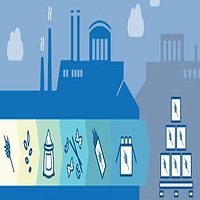As consumers lead increasingly active, on-the-go lifestyles, demand for convenient meal options continues to grow and drive opportunity for ready-to-eat (RTE) and prepared foods manufacturers.
However, as opportunity grows, the ongoing evolution of the global food safety regulatory environment may present many challenges to manufacturers that operate within highly complex supply chains. That’s particularly true in the United States, where many of the provisions of the Food Safety Modernization Act (FSMA) are still pending.
RTE products are not typically reheated prior to serving, and some, such as sliced meats, have been linked to illnesses caused by foodborne pathogens. The U.S. Department of Agriculture Food Safety and Inspection Service (USDA-FSIS) has reported recalls of nearly a half-million pounds of RTE in 2012 because of the presence of Listeria monocytogenes, the bacterium that causes listeriosis, or the listeria illness. In an effort to also reduce the number of food pathogen-related recalls, the U.S. Food and Drug Administration (FDA) has proposed additional rules aimed at proactively controlling the occurrence of potentially dangerous food-related illness.
As FDA’s increased regulatory oversight nears, RTE food manufacturers must carefully examine their processing operations to ensure that they are in line with new standards. Using a combination of technologies and best practices will be crucial to prepared foods and RTE food product manufacturers.
Safety First
Reacting to high-profile foodborne illness outbreaks, FDA enacted FSMA in 2011 to ensure the overall safety of the U.S. food supply through proactive rather than reactive means. The law gives FDA authority to mandate safety measures and regulate how food is processed.
Instead of reacting to food contamination outbreaks, the new law gives FDA authority to put mandatory safety measures into place designed to prevent such events, regulating how food is processed. It is important to note that it also empowers FDA to recall food products.
The proposed rule change will require foreign and domestic companies that manufacture, process or package food for human consumption in the U.S. to develop formalized written food safety plans. Similar to conventional Hazard Analysis and Critical Control Points (HACCP) plans, manufacturers must identify hazards and put protective controls into place. However, the new rule requires more stringent control measures for allergens and sanitation when determined by the initial Hazard Analysis, rather than focusing solely on CCPs. The proposed rule also requires manufacturers to monitor, adjust plans as needed, verify and report on the overall effectiveness of the food safety plan. These plans will need to be available to FDA, which will evaluate them and inspect facilities for compliance.
Preventing Contamination
A comprehensive food safety plan begins with combatting bacterial contamination at the food processing facility—usually through good sanitation practices and modern technological advancements. Recent innovations in processing and packaging systems can help maintain the overall cleanliness of food manufacturing operations, ensuring regulatory compliance and product safety, while protecting a brand’s reputation.
• Designed for Safety
Because it comes into direct contact with the product, food packaging equipment is a key area of focus for any food safety program, and equipment design can factor heavily into an operation’s microbial controls. State-of-the-art packaging machinery is designed with safety in mind—minimizing exposed parts, wiring, slots and holes, for example, to reduce the number of areas where potentially harmful bacteria can thrive.
Original equipment manufacturers (OEMs) are also choosing their building materials with care. Stainless steel is often easier to clean than other materials, because it can stand up to extremely harsh chemical cleansers. However, some OEMs are also offering high-tech antimicrobial coatings of bacteria-resistant materials, such as enhanced polymers and select metals, to increase product safety. Automation is another effective option for improving product safety; by reducing opportunities for human error, automated solutions attack an all-too-common source of contamination.
• Technological Advancements
Technology has come a long way, allowing food manufacturers to take preventative measures other than extreme temperatures, which can negatively impact food quality. Innovative, nonthermal techniques use UV light and ultrasound to sterilize food products without affecting product consistency or taste.
High-pressure processing (HPP) is another increasingly popular non-thermal method. HPP applies up to 87,000 pounds per square inch of pressure to eliminate potentially harmful microorganisms and is known to be effective against bacteria that can cause foodborne illness, such as pathogenic Escherichia coli, Salmonella and L. monocytogenes. HPP has been recognized by USDA-FSIS as a mitigation step to reduce microbial activity in RTE meat products such as marinated meats, sliced ham, turkey and chicken cold cuts and cured meat products.
Techniques for Success
Implementing a robust food safety plan that takes advantage of the latest in technology is certainly a step in the right direction, but without procedures and practices in place and followed, even the most ambitious plans have little chance of success. Employees are the driving force behind ensuring food safety and quality control rigorous training in proper sanitation and clean-up measures at all staff levels and functions can mean the difference between the success and failure of any food safety plan.
While the proposed FSMA regulations do not focus exclusively on CCPs, good sanitary design and material handling can still factor into preventative measures. For example, through strictly controlled zoning, a manufacturer can control when and where products come in contact with equipment or personnel—and that allows managers to focus their food safety efforts in the areas that need it most. A zone dedicated to mixing meat and spices prior to cooking, for example, would be of greater concern for food safety than a zone for palletizing finished products.
As the popularity of RTE and prepared foods products continues to rise, FDA is paying particular attention to food safety and will be implementing FSMA to include stricter processing controls. The increased regulatory requirements will force RTE manufacturers to take a close look at their entire operations, not just CCPs, to determine where food safety controls are needed. Implementing comprehensive food safety plans that combine the latest in food processing technology with on-site best practices will allow RTE manufacturers to comply with FDA standards, while increasing the overall safety of their products and ensuring the ongoing integrity of their brand.
 Jeffrey Barach, Ph.D., is a food scientist responsible for research and development, regulatory liaison activities, teaching, problem solving and trouble shooting. He routinely participates in planning, development and management of special projects and programs for the food industry on health and safety issues, production of foods, regulatory inspection and compliance issues and training. He received his Ph.D. in food science from North Carolina State University.
Jeffrey Barach, Ph.D., is a food scientist responsible for research and development, regulatory liaison activities, teaching, problem solving and trouble shooting. He routinely participates in planning, development and management of special projects and programs for the food industry on health and safety issues, production of foods, regulatory inspection and compliance issues and training. He received his Ph.D. in food science from North Carolina State University.
>




